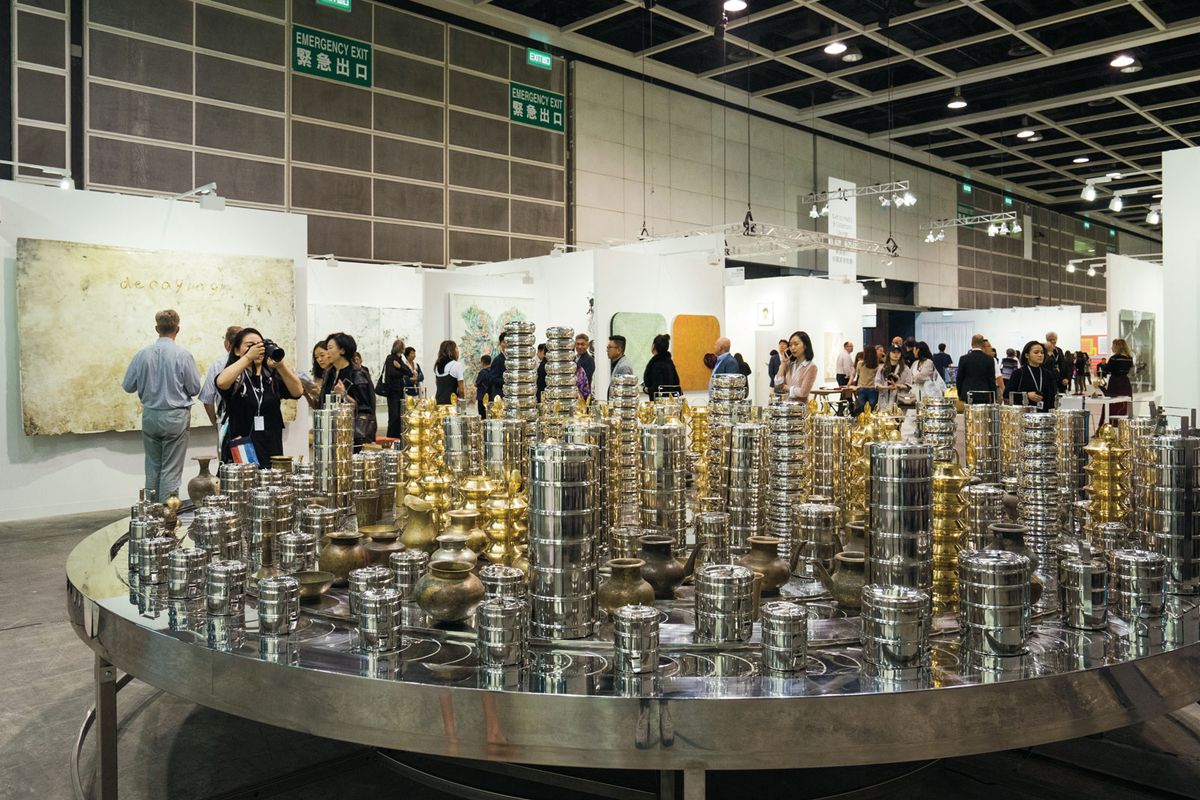“Are Indian galleries making a comeback? That’s the buzz right now,” says Adeline Ooi, the director of Art Basel in Hong Kong (ABHK). The number of Indian dealers showing at the fair this year has risen to nine, up from six in 2017 and four in 2016. Although they still represent only a tiny proportion of the exhibitors overall, these increments could signal that the country’s art market is finally growing again.
Two galleries are new additions for 2018: TARQ, which opened in Mumbai four years ago, and the established Delhi-based Gallery Espace. Meanwhile, Sakshi Gallery from Mumbai returns after a two-year hiatus.
Ooi says that there is “palpable excitement” about recent events such as the opening of a sculpture park in Jaipur in December and reports of “healthy” sales at the India Art Fair in Delhi in January. “The evidence suggests that the scene is becoming active again,” she says.
But what do galleries make of the mounting speculation about growth? Priyanka Raja, the co-founder of the Kolkata-based gallery Experimenter, which opened a second space in February, is optimistic. “The size and geography of the market are growing,” she says, noting that collectors are springing up in second-tier cities such as Ahmedabad, Bangalore and Goa.
Raja says that her decision to expand was not driven by market forces, although six years ago, the gallery “did not have the resources to think this large”. Participating in around six art fairs a year supports the gallery’s programme in a country “that is still lacking” in terms of art infrastructure, she says.
Geetha Mehra, the director of Sakshi Gallery, says that more buyers are entering at the affordable end of the market in India. “Younger people with smaller budgets are coming in, but overall, things are more or less the same,” she says.
At the fair, the gallery is showing a single installation by Vivek Vilasani. City—Fifth Investigation (2017, priced at $40,000) comprises 31 translucent rice-paper sheets that were exposed to pollution in Delhi to varying degrees over the course of a month. “The paper records the smog in one of the most polluted cities in the world, which is relevant to cities in Asia and China that also face tremendous pollution,” Mehra says, adding that Vilasani has a following in Taiwan, Korea and parts of China.
India’s economy has been growing at a rate of around 7% a year since 2014, fanning optimism in the art market. Clare McAndrew, the author of Art Basel’s market report, says that rapidly expanding economies generally give rise to increased spending in the art market, although in emerging economies, the situation is less clear-cut. In India, for example, “supply-side fundamentals and other factors are still key”, she says.
However, two recent economic reforms have posed challenges for the Indian market. The government’s demonetisation effort, implemented at the end of 2016 to combat counterfeit cash, resulted in reduced spending in galleries. But, according to the South Asian Art Market Report 2018, by the art-market analysts ArtTactic, only 27% of Indian galleries expect the negative impact to continue throughout 2018, and 24% believe that a shored-up currency could have a positive effect.
The Goods and Services Tax, meanwhile, introduced in July 2017 to create a uniform taxation system across India, has been of less consequence. “Tax is only down by 1% for art, which won’t make or break the market,” Mehra says.
Other dealers sound a note of caution. Peter Nagy, the founder of the Delhi-based gallery Nature Morte, which represents the Indian artist Subodh Gupta, who has a work in the fair’s Encounters sector, says: “The market is slowly getting better, but it’s not blooming.” Nagy points out that two prominent Mumbai-based galleries, Lakeeren and Maskara, closed last year. “It’s a blow to the scene. Ultimately, we need more galleries in India,” he says.


